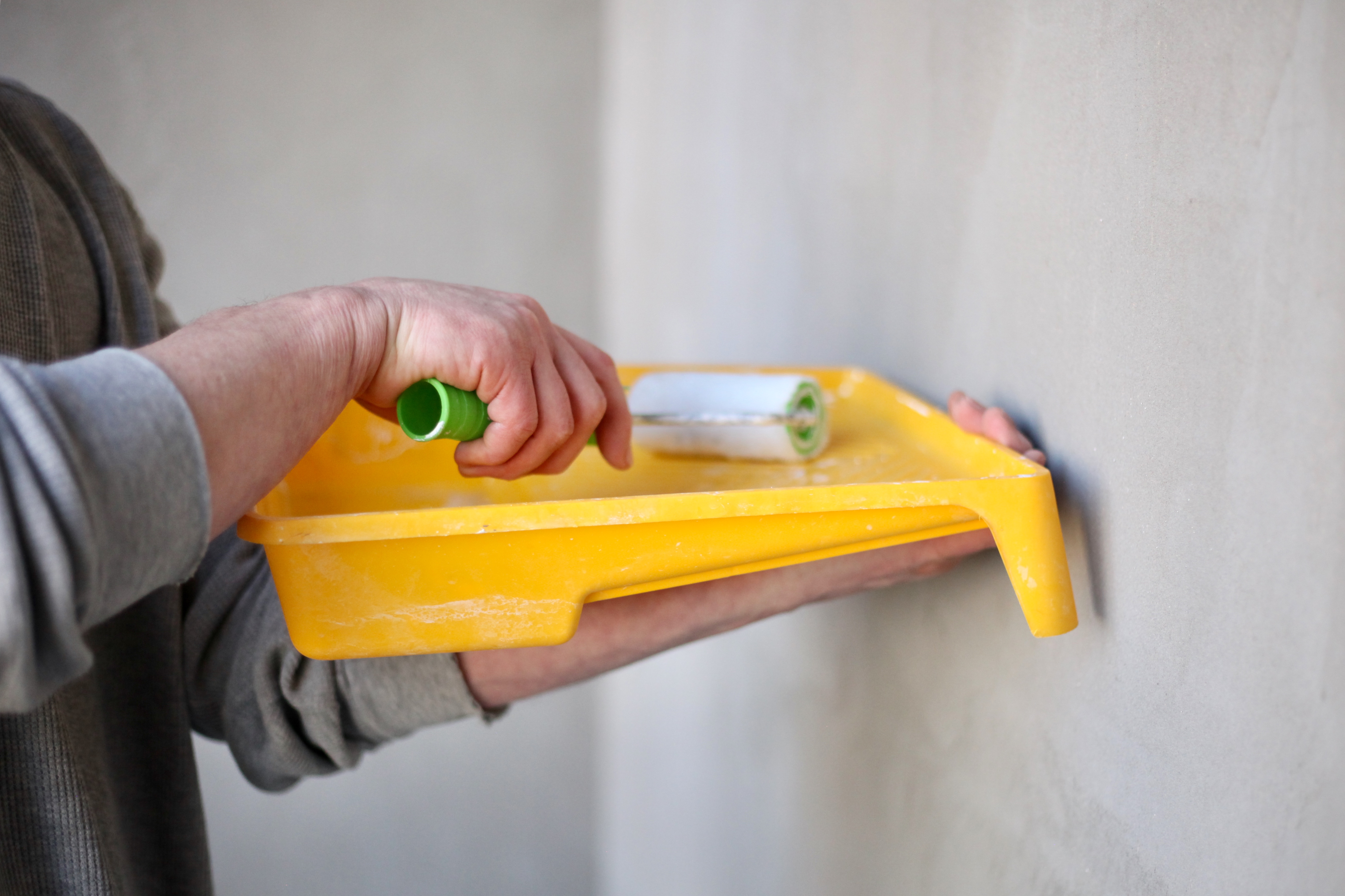Blogs

Cost to repaint interior of house in 2025
The cost of repainting a home interior is rarely a fixed number. It is a highly variable investment influenced by three main factors: the size and complexity of the space, the quality of materials selected, and the level of preparatory work required. Homeowners should expect a professional quote to cover far more than just the paint application—it includes protection, preparation, cleanup, and materials.
Average Interior Painting Costs
Professional pricing models are typically built upon the estimated labor hours needed per surface area (square footage) combined with the cost of premium materials.
By Room Size and Square Footage
Painters use the wall's surface area (length times height) to calculate material needs and labor time. While rates vary based on location and company, typical costs in the US can range from $\$2$ to $\$6$ per square foot of wall surface, including materials and labor.
Small Room (e.g., $10\text{x}12$ Bedroom): These generally have the lowest cost, assuming minimal prep work.
Large Open Spaces (e.g., vaulted living areas or open-concept kitchens): These incur higher costs because they require more specialized equipment (scaffolding, tall ladders), significantly more masking time, and greater coordination to maintain a seamless finish across vast wall surfaces.
Regional Pricing Variations
Pricing is heavily dependent on local economic factors, including the local cost of living and average professional labor rates. While pricing ranges nationally, homeowners must budget based on their specific region. Key regional factors include:
Insurance and Licensing: Areas with higher compliance and liability requirements typically have higher professional overhead costs, which are reflected in the quote.
Local Competition: Markets with high demand and few established, reliable contractors may see higher pricing than highly competitive markets.
What Affects the Final Cost
The primary components that drive your final estimate are the condition of your existing walls and the grade of paint chosen.
Wall Preparation and Patching Needs
Preparation is the most labor-intensive part of the job and is often the main driver of the final price. If the walls are in poor condition, expect costs to rise significantly.
Prep Need
Cost Impact
Simple Prep
Included in standard hourly rate. Covers cleaning, light sanding, and filling small nail holes.
Medium Prep
Adds 15%-25% to labor costs. Covers repairing minor drywall damage, fixing nail pops, or using stain-blocking primer on small areas.
Heavy Prep
Adds 30%-50% or more to labor costs. Required for fixing large cracks, extensive water damage, peeling paint (requiring scraping and heavy sanding), or texture matching.
Paint Quality, Color, and Finish Type
Choosing better paint is a long-term investment that increases the upfront material cost but reduces future repainting frequency.
Paint Grade: Premium $100\%$ acrylic latex paints cost more per gallon but offer superior hide (better coverage, fewer coats), durability, and washability. Choosing a contractor-grade paint may save money upfront but can lead to peeling or fading faster.
Color Change: A drastic change (e.g., painting a dark navy wall white) requires extra coats of paint and usually a coat of specialized color-blocking primer, increasing both material and labor costs.
Finish Type (Sheen): High-sheen finishes like semi-gloss and gloss require more tedious, detailed application and better surface preparation to look flawless, which can increase the labor cost for trim and doors.
Cost Breakdown by Area
Different rooms and surface types are priced differently due to the complexity of the work, not just the square footage.
Living Rooms, Bedrooms, Bathrooms, and Kitchens
Living Rooms & Bedrooms: Typically the most straightforward rooms to paint. Costs are moderate because they usually involve large, flat wall surfaces and minimal masking around permanent fixtures.
Bathrooms & Kitchens: These rooms are generally the most expensive per square foot due to:
Fixtures: More masking required around cabinets, backsplashes, ventilation, and plumbing.
Specialty Paint: Require high-grade, mold-resistant paint (often semi-gloss or satin), which costs more per gallon.
Higher Prep: Walls often need extra degreasing and cleaning before painting can begin.
Ceilings, Trim, and Doors
These elements are often quoted as additions to the main wall cost.
Element
Pricing Factor
Ceilings
Priced by square footage. Costs increase significantly for vaulted, tray, or coffered ceilings due to height, angles, and complexity of cut-ins along the trim/wall line.
Trim (Baseboards & Crown Molding)
Priced by the linear foot. This is tedious, detail-oriented work requiring high-sheen paint and multiple coats, making the linear foot cost higher than the wall square foot cost.
Doors
Priced per side. Interior doors require detailed brush and roller work, and often need significant sanding or patching if they have existing chips or old, flaking paint.
How to Save Money on Interior Painting
While cutting corners on quality is never recommended, there are strategic ways to manage and reduce the overall cost of your project.
Schedule During Off-Peak Seasons
The high season for interior painting generally runs from late spring through the end of summer.
Winter Advantage: Consider scheduling your interior work in the late fall or early winter (excluding the busy holiday weeks). This is typically the painting industry's slower period, and contractors may be more willing to offer competitive pricing or schedule flexibility to fill their calendars.
Choose Washable Paints that Last Longer
The most cost-effective decision you can make is choosing durable, high-quality paint (semi-gloss for trim and satin/eggshell for walls).
Reduce Frequency: Highly washable finishes allow you to spot clean marks and scuffs effectively without damaging the underlying paint film, extending the life of your paint job from the typical $5$ years to $7$ or $8$ years, minimizing the lifetime cost of ownership.
FAQs
Do painters charge by the room or square foot?
Professional painters primarily calculate their costs based on the square footage of the walls and ceilings, along with the linear footage of trim and the number of doors. They use these measurements to accurately estimate the labor time (the largest expense) and material needed. However, they usually present the final quote to the client as a simple, fixed "project cost" or "cost per room" for transparency and ease of understanding.
Is it cheaper to repaint before moving in?
Yes, it is significantly cheaper to repaint an empty house or apartment before any furniture is moved in. Empty rooms eliminate the costly and time-consuming labor of:
Moving and covering all furniture.
Carefully masking and protecting personal belongings, electronics, and décor.
Working slowly around obstacles.
Repainting an empty space allows the crew to work faster and more efficiently, saving you substantial labor costs.
Ready to get a precise, detailed, and transparent quote for your interior repaint project?
Contact Masterpiece Painter today. We provide accurate, no-surprise estimates based on professional assessment of your wall condition, surface area, and material needs. Let us help you plan your next home refresh with confidence.
About Masterpiece Painter
For over 17 years Masterpiece Painter, has been serving communities all around New England. Let us help you make your wishes come true by turning your property into a Masterpiece
Get a Quote

© copyright 2023 All Rights Reserved.



